Commons are cultural and natural resources that groups of people create collectively. However, the striking amount of underused public spaces in cities shows the extent to which the value of public space is underestimated. Urban commons are a crucial terrain of socio-political and intellectual struggle in the world. Despite a lack of attention to how public spaces are being tackled, the potential value of been transformed into a kind of resource for community development can be possibly seen.
However, there is always debate existing between ‘commons’ and ‘public’. It is important to question to what extent commons are actually public, and that leads to the consideration of ambivalence between openness and exclusion. Under this context, this Unit wants to stimulate a reflection on the significance and challenges of producing and maintaining urban environments whose use and resources are shared amongst a group of people, whose access is (to some extent) open, whose ownership is apparently subtracted to the tyranny of urban capitalism. Unit D aims at exploring the extent to which commons live (or survive) outside urban capitalism and neoliberal ideology and question the potential value in urban commons.
Unit D aims at revolving around this design research question through design projects across Phnom Penh (Cambodia) and Rome (Italy), starting from comparative investigation between two different contexts. Projects were been expected to respond to design problems and research questions, focusing on the current existing stakeholders, considering their needs, and understanding their way of designing space.
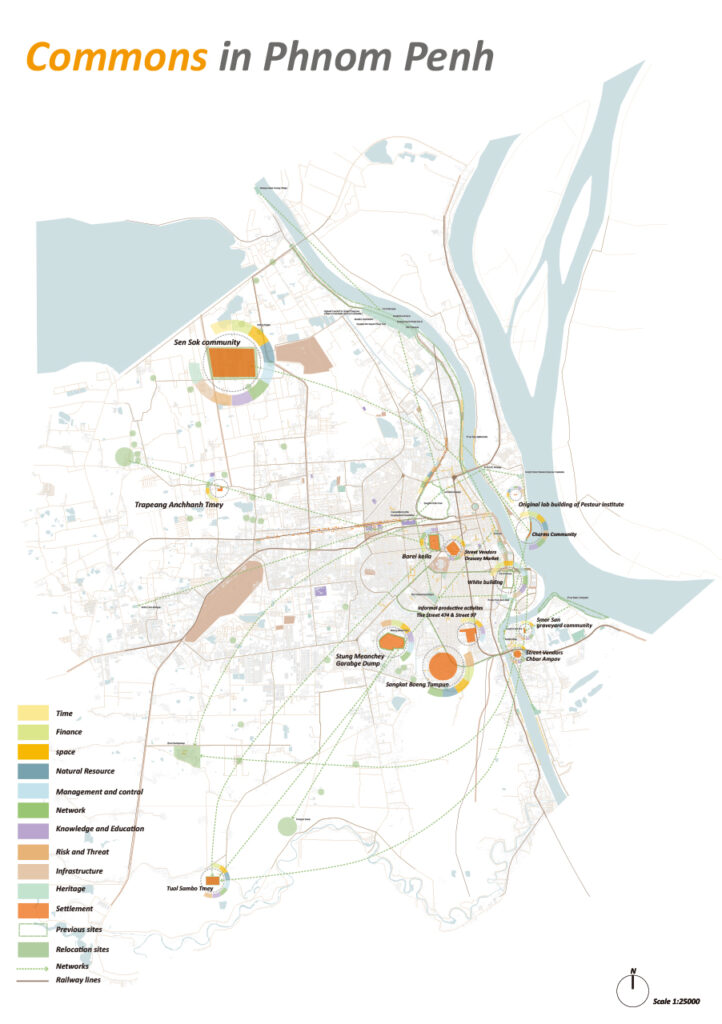
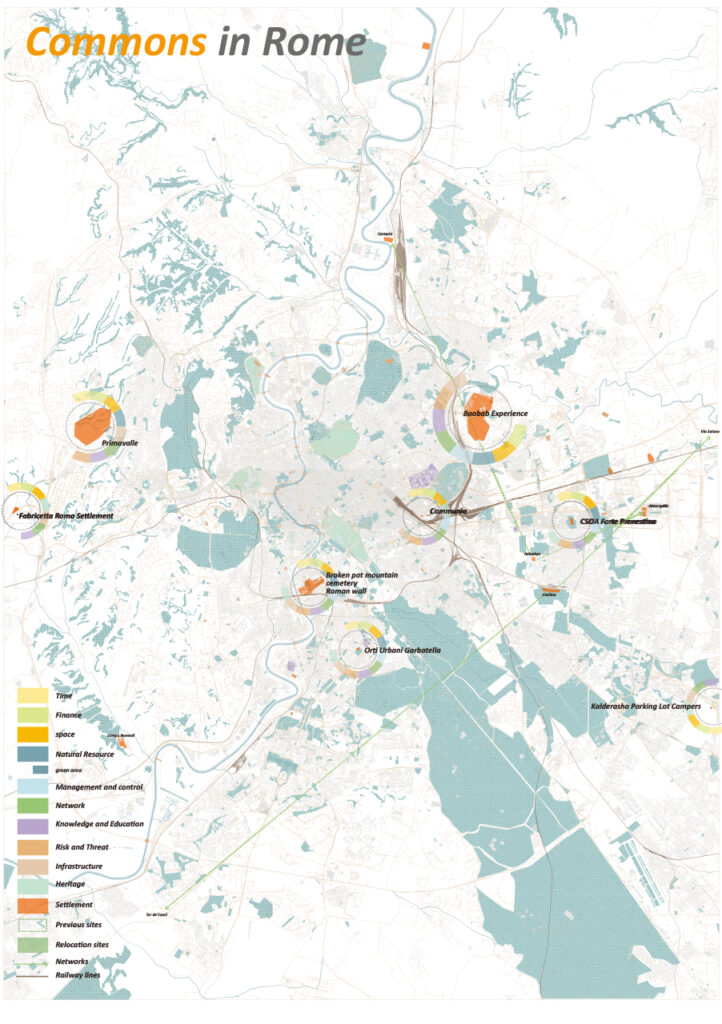
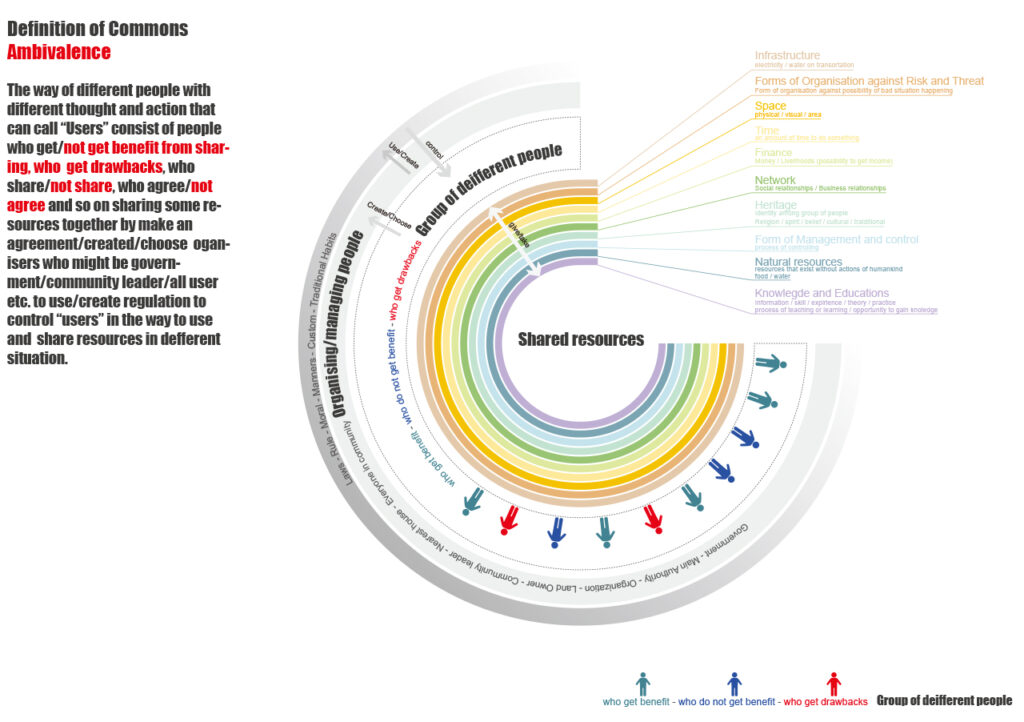
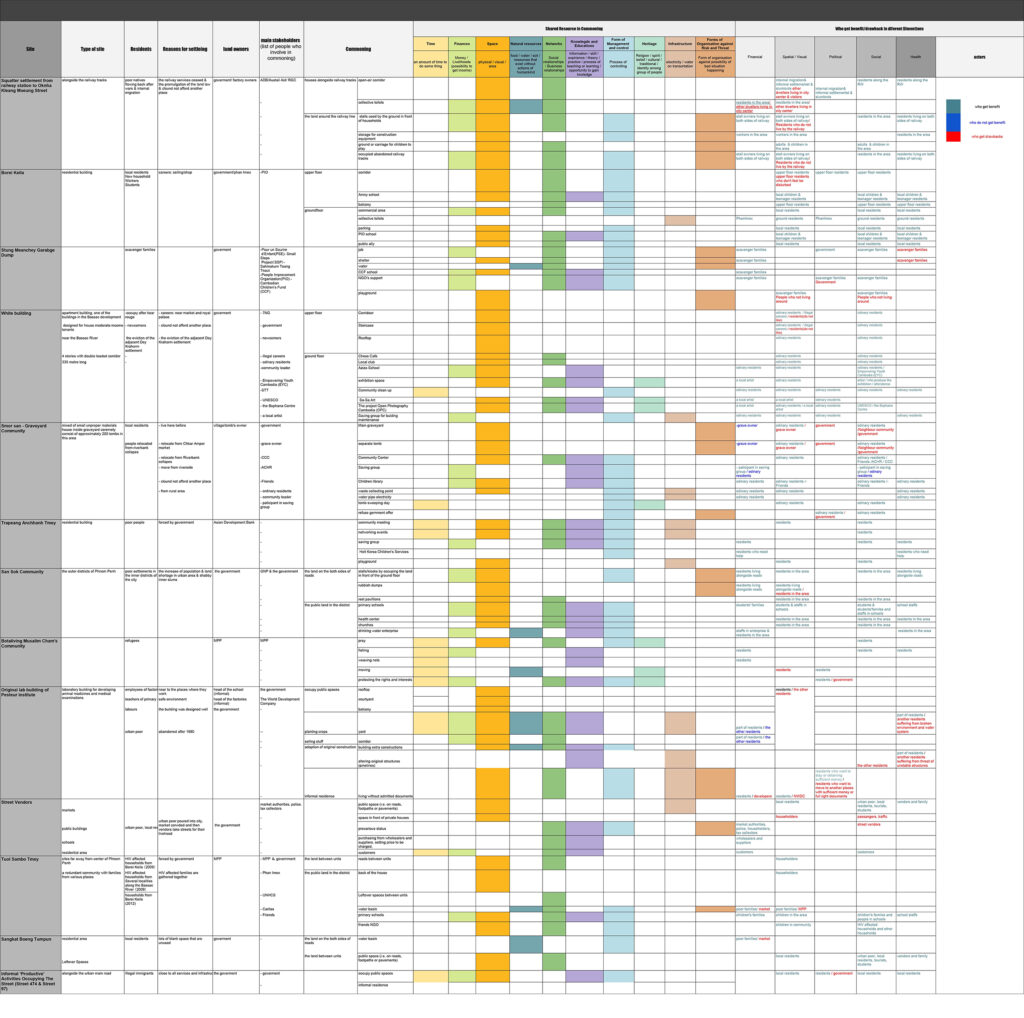
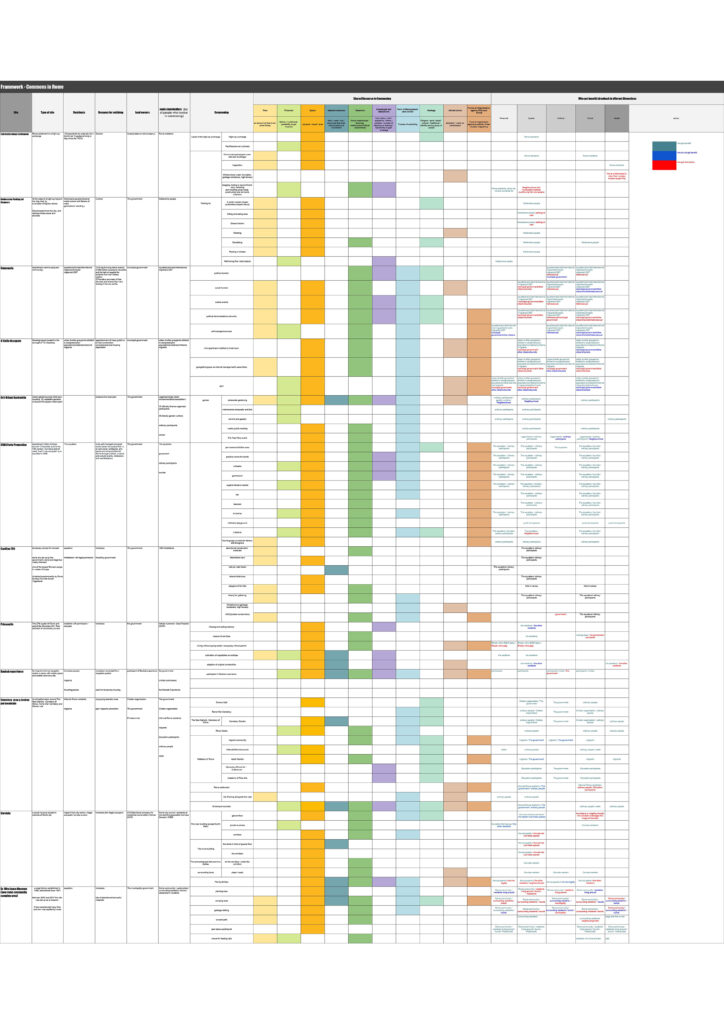
Unit D researched urban commons from Phnom Penh to Rome and contributed to these city maps. Maps were been built by analyzing urban common resources and the potential relationship between the stakeholders. The table shows the information framework that been analyzed.
